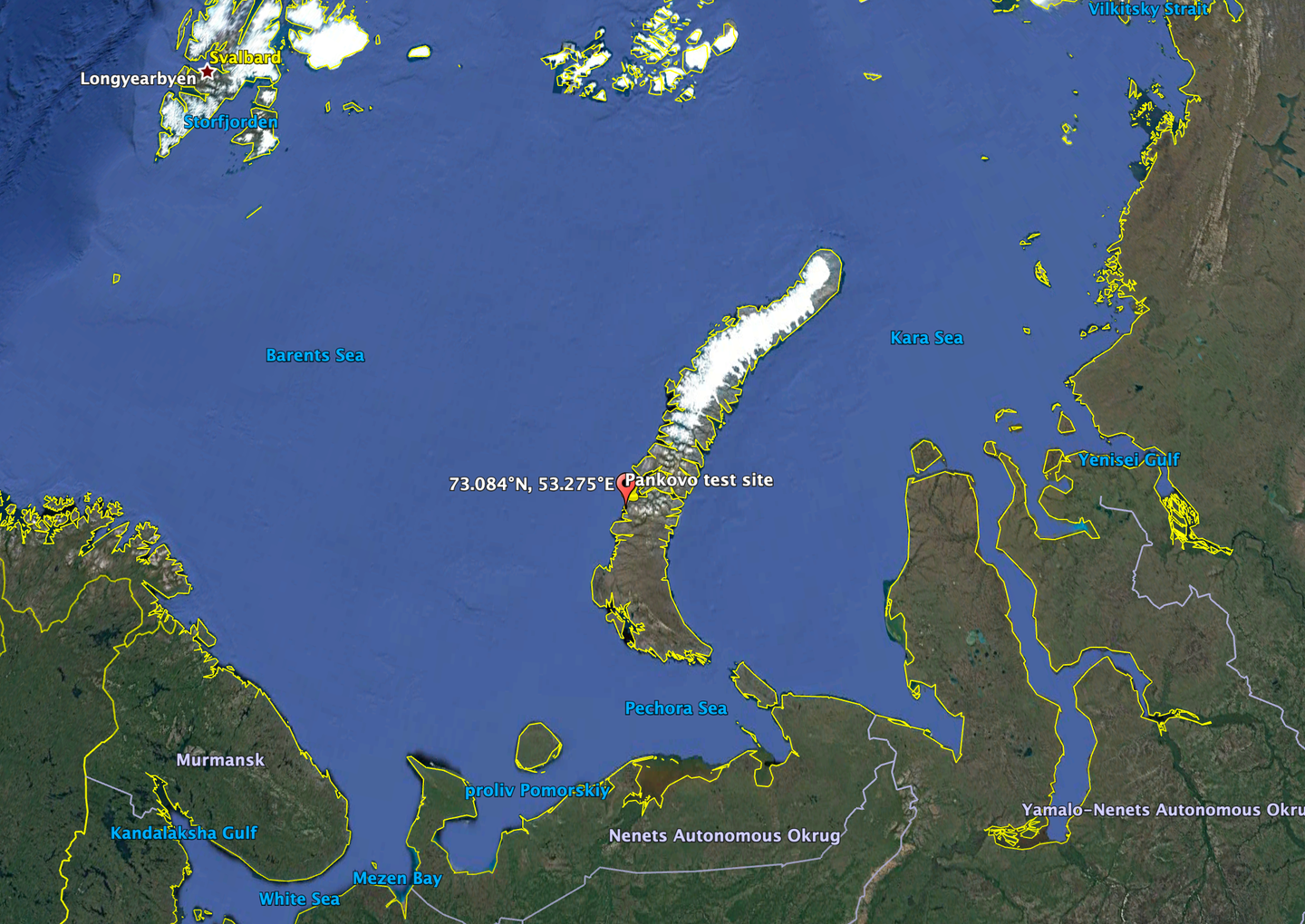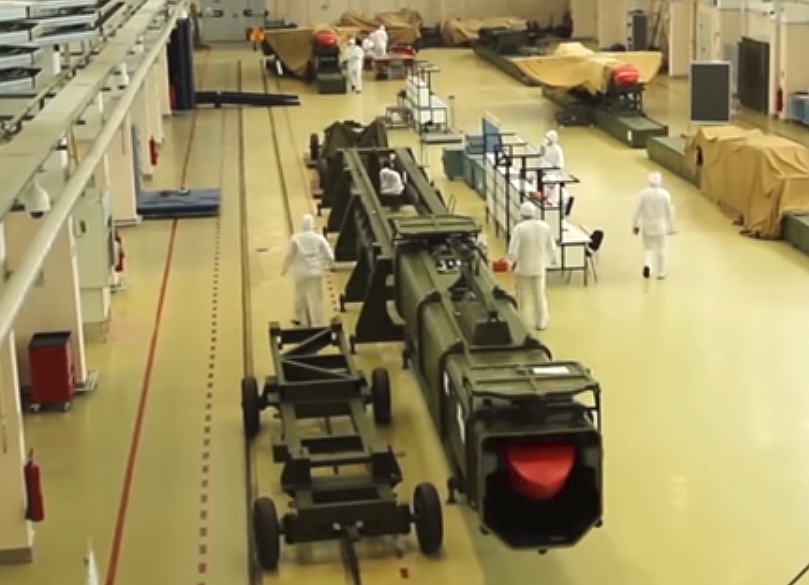Amid the ongoing Ukraine conflict, Russian commentators and experts frequently make ominous statements regarding the possible use of Poseidon, a nuclear-powered torpedo, against Western targets.
However, another nuclear-powered weapon could emerge as a significant source of worry for the United States and its allied nations.
Russia has claimed the successful testing of its nuclear-powered cruise missile, which can bring considerable devastation to major urban centers and military installations.
During a Plenary Session at the Valdai Discussion Club, a Kremlin-affiliated research institute, Vladimir Putin announced that Russia had successfully tested the Burevestnik nuclear-powered intercontinental cruise missile.
“The last successful test of Burevestnik, a global-range cruise missile with a nuclear power plant, a nuclear propulsion system, has been carried out,” the president said.
The announcement comes just days after The New York Times, based on satellite imagery, suggested that Russia might be preparing for or may have already conducted tests of an intercontinental cruise missile powered by a nuclear reactor.
In the past, the missile, known as the Burevestnik or SSC-X-9 Skyfall, faced prior trial failures and was even involved in an accident leading to multiple fatalities.
The report explained that the satellite imagery captured on September 20 revealed equipment on the launch pad near a base in Russia’s remote Arctic region.
This equipment included a truck with an accompanying trailer, which appeared to be proportionate in size to the missile in question.
New: Satellite images and aviation data indicate Russia may be preparing for — or has recently conducted — a test launch of the nuclear-powered, nuclear-capable Burevestnik missile. Gift link below. https://t.co/kXZFmCup3O
— Riley Mellen (@riley_mellen) October 2, 2023
Additionally, the typical shelter concealing the launch pad was temporarily moved aside. By midday, the trailer had disappeared, and the shelter had been restored to its original position.
Subsequent satellite images from September 28 revealed a resurgence of activity at the launch pad, featuring a truck once more stationed near the area and the shelter once again pushed aside.
Meanwhile, Russian authorities issued a notice on August 31, cautioning pilots to steer clear of a designated “temporarily dangerous zone” over a portion of the Barents Sea, located several kilometers from the Pankovo launch pad. A similar notice was released before the Burevestnik missile test in 2019.
In early August, Norwegian environmental organization Bellona, which scrutinized satellite images, detected the presence of two Rosatom aircraft at the Rogachevo airbase, located approximately 160 kilometers from the launch pad. These aircraft are believed to be involved in data collection related to missile launches.

Over the past two weeks, the United States has also conducted surveillance flights near the base, marking a slight uptick that could signify Washington’s heightened interest or apprehension.
A US-based military expert, who requested anonymity, shared doubts about the claims of a successful missile test with EurAsian Times, stating, “The missile has experienced multiple test failures, and it remains to be seen whether the specifications outlined on paper have been achieved in real-world scenarios.”
She further remarked, “While the missile has the potential to serve as an effective deterrent, it also carries the risk of triggering a nuclear arms race between the United States, China, and Russia.”
Nuclear Powered Burevestnik Missile
The Burevestnik, an exceptionally advanced intercontinental cruise missile, boasts an impressive range of up to 14,000 miles thanks to its nuclear propulsion system. Russian President Vladimir Putin initially announced this project in March 2018.
This missile is part of an array of strategic weaponry, comprising other formidable systems such as the Kinzhal ballistic missile and the Avangard hypersonic glide vehicle, nuclear-powered torpedo Poseidon.
These were all unveiled by Russian President Putin in a 2018 speech, where he asserted their potential to outmatch and outmaneuver existing US defense systems.
According to a Nuclear Threat Initiative report, the Burevestnik is classified as a “second-strike, strategic-range weapon.” It is strategically intended for deployment after an initial wave of nuclear strikes has already wreaked havoc on targets within Russia.
While it could theoretically carry a conventional warhead, practical use suggests a preference for a nuclear payload, albeit one smaller in scale than most other nuclear-capable armaments. This missile can damage significant urban areas and military installations during wartime deployment.

The New York Times emphasizes the threat posed by this missile not solely due to its capacity to transport a potent nuclear warhead but also because of the potential for harmful radioactive emissions should an accident or malfunction occur during a test.
The possibility of adding the Burevestnik missile to Russia’s arsenal depends on two main factors.
First, the significant technical challenge is to ensure the nuclear propulsion system works reliably. This has proven difficult, with multiple test flights failing and even causing a fatal accident.
Second, its inclusion also depends on the direction taken by strategic arms control efforts.
If the Burevestnik missile is deployed, it would become an integral part of Russia’s nuclear arsenal, falling under the purview of a nuclear arms reduction treaty signed by Moscow in 2011.
This treaty limits the overall number of warheads and delivery vehicles Russia can have in its arsenal. However, the situation becomes more complex due to the impending expiration of the new START treaty, scheduled for February 2026.
In the absence of a new agreement to replace the expiring treaty, the missile could potentially contribute to what is often referred to as an “uncontrolled arms race,” with countries potentially increasing their nuclear arsenals without the constraints provided by existing arms control agreements.
- Contact the author at ashishmichel(at)gmail.com
- Follow EurAsian Times on Google News




